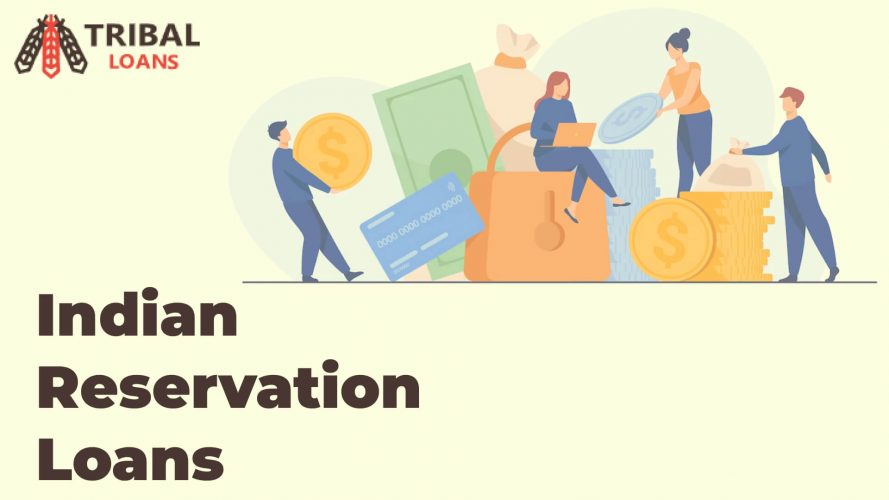
In the United States, Native American tribes have a long and complex history that has shaped their economic, cultural, and legal landscapes. One aspect of this history involves Indian reservation loans, also referred to as Indian tribe loans. These financial arrangements have unique characteristics, rooted in the federal recognition of tribal sovereignty and the economic challenges many tribes face. In this article, we will explore the concept of Indian reservation loans, their significance, challenges, and potential impacts.
Indian Reservation Loans Explained
Indian reservation loans are a specific type of lending arrangement offered to Native American tribes residing on federally recognized reservations. These loans can take various forms, including business loans, personal loans, housing loans, and agricultural loans. They are often designed to provide financial support to tribes that may have limited access to traditional banking services, face economic disadvantages, and have difficulty accessing capital through conventional means.
The concept of Indian reservation loans is deeply tied to the legal principle of tribal sovereignty. Tribal sovereignty recognizes the authority of tribes to govern themselves and make decisions within their territories. It also means that tribes are considered distinct nations with a degree of self-governance. This principle has implications for economic activities within reservations, including financial transactions and lending practices.
Significance and Challenges
Indian reservation loans play a significant role in addressing the economic challenges faced by many Native American tribes. These challenges can include high unemployment rates, limited infrastructure, lack of access to credit, and poverty. Reservation loans aim to provide tribes with the financial resources necessary to develop businesses, improve infrastructure, promote education, and enhance the overall quality of life for tribal members.
However, there are notable challenges associated with Indian reservation loans:
- Regulatory Complexity. The legal and regulatory framework for Indian reservation loans involves a complex interplay of federal, state, and tribal laws. Navigating these regulations can be challenging for lenders and borrowers alike.
- High Risk. Due to economic disparities and limited collateral, lending to tribal entities can be riskier for financial institutions. This risk is reflected in interest rates and terms that might be less favorable than those available to non-tribal borrowers.
- Cultural Sensitivity. Lenders and borrowers must navigate cultural differences and respect tribal customs while conducting financial transactions. This requires a deep understanding of tribal values and practices.
- Sustainability. Ensuring that loaned funds are used effectively and sustainably for the long-term benefit of the tribe can be a complex endeavor.
- Debt Burden. While reservation loans can offer crucial financial support, tribes must also carefully manage debt to avoid excessive financial burdens that could hinder future growth.
Potential Impacts
When used judiciously and responsibly, Indian reservation loans can have several positive impacts:
- Economic Development. These loans can contribute to the growth of tribal economies, leading to increased employment opportunities and improved living standards for tribal members.
- Infrastructure Improvement. Tribes can use loaned funds to invest in critical infrastructure projects such as roads, schools, healthcare facilities, and housing.
- Cultural Preservation. Stronger tribal economies can support the preservation of cultural traditions and heritage, which are integral to the identity of Native American communities.
- Education and Healthcare. Improved financial resources can lead to better educational and healthcare facilities within reservations.
Are Indian Tribe Loans Available With Bad Credit?
Tribal loans are available to individuals with bad credit, but they can be risky due to potential high costs and predatory lending practices. These loans are offered by lenders affiliated with Native American tribes, often with claims of sovereign immunity from certain regulations. However, this immunity can lead to lack of consumer protections and higher interest rates. It’s advisable to exhaust other lending alternatives, improve your credit over time, and carefully read and understand the terms before considering a tribal loan.
Benefits of Indian Reservation Loans for Bad Credit
- Inclusivity: These loans foster financial inclusivity, allowing individuals with poor credit scores to access funds crucial for various needs.
- Leveraging Tribal Sovereignty: Tribal sovereignty often affords greater flexibility in lending terms, enabling individuals with bad credit to obtain loans on terms that might not be available elsewhere.
- Community-Centric Approach: Loans within Native American communities are typically structured with the well-being of tribal members in mind, taking into account their unique circumstances.
Conclusion
Indian reservation loans play a crucial role in supporting economic development and improving the quality of life for Native American tribes. However, they come with unique challenges stemming from the intersection of tribal sovereignty, economic disparity, and complex regulations. As these loans continue to shape the economic landscape of tribal communities, it is essential to approach them with a deep respect for cultural values, sustainable planning, and a commitment to the long-term well-being of the tribes and their members.